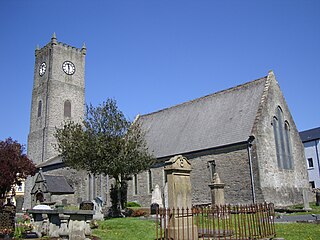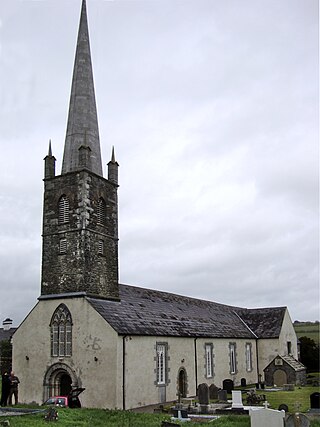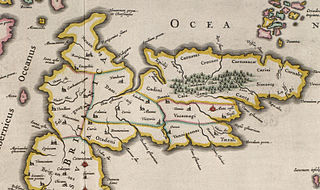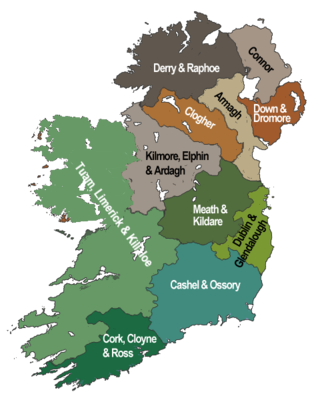Thomas Wetherhead [1] was Archdeacon of Cork and of Cloyne then Bishop of Waterford and Lismore [2] from 1589 until 1592. [3]
Thomas Wetherhead [1] was Archdeacon of Cork and of Cloyne then Bishop of Waterford and Lismore [2] from 1589 until 1592. [3]
Donatus Ó Muireadhaigh, O.S.A. was a fifteenth-century Archbishop of Tuam.
The Bishop of Ardagh and Clonmacnoise is the Ordinary of the Roman Catholic Diocese of Ardagh and Clonmacnoise, one of the suffragan dioceses of the Archdiocese of Armagh. The episcopal title takes its name after the town of Ardagh in County Longford and the monastery of Clonmacnoise in County Offaly, Ireland.
The Bishop of Waterford and Lismore is an episcopal title which takes its name after the city of Waterford and town of Lismore in Ireland. The title was used by the Church of Ireland until 1838, and is still used by the Roman Catholic Church.

The Bishop of Raphoe is an episcopal title which takes its name after the town of Raphoe in County Donegal, Ireland. In the Roman Catholic Church it remains a separate title, but in the Church of Ireland it has been united with another bishopric.

The Bishop of Ross was a separate episcopal title which took its name after the town of Rosscarbery in County Cork, Ireland. The title is now united with other bishoprics. In the Church of Ireland it is held by the Bishop of Cork, Cloyne and Ross, and in the Roman Catholic Church it is held by the Bishop of Cork and Ross.
The Bishop of Lismore was a separate episcopal title which took its name after the town of Lismore in County Waterford, Republic of Ireland.

The demographic history of Scotland includes all aspects of population history in what is now Scotland. The earliest surviving archaeological evidence of human settlement is of Mesolithic hunter-gatherer encampments. These suggest a highly mobile boat-using people, probably with a very low density of population. Neolithic farming brought permanent settlements dating from 3500 BC, and greater concentrations of population. Evidence of hillforts and other buildings suggest a growing settled population. Changes in the extent of woodland indicates that the Roman invasions from the first century AD had a negative impact on the native population.
Hugh Gore DD (1613-1691) was a seventeenth century Anglican Bishop of Waterford and Lismore in Ireland who founded Swansea Grammar School.
George Baker was Bishop of Waterford and Lismore in the Church of Ireland from 1661 until 1665.
William Burscough was an eighteenth-century English Anglican priest.
Thomas Otway was an Anglican bishop in Ireland.
Roger Dod, DD, Fellow of Pembroke Hall, Cambridge and Archdeacon of Salop, was Bishop of Meath from 6 November 1605 until his death on 27 July 1608.
Edward Young was an English Anglican priest in the eighteenth century: his senior posts were in Ireland.
Capel Wiseman was an English Anglican priest in Ireland in the second half of the seventeenth century:
Nathanael Wilson was a 17th-century English Anglican priest in Ireland.

The Archdeacon of Ferns is a senior ecclesiastical officer within the Church of Ireland. The Archdeacon is responsible for the disciplinary supervision of the clergy within the Ferns Diocese, now part of the Diocese of Cashel and Ossory.

The Archdeacon of Kilfenora was a senior ecclesiastical officer within the Diocese of Kilfenora until 1643; the Archdiocese of Tuam until 1752; the Diocese of Killaloe and Kilfenora until 1834; and the Diocese of Killaloe and Clonfert until 1923 when it was amalgamated with Killaloe.
William Golborne was a Bishop of Kildare.
Daniel Neylan was a bishop in Ireland at the end of the sixteenth and beginning of the seventeenth centuries. He was Bishop of Kildare.
William Miagh was a bishop in Ireland during the sixteenth century.